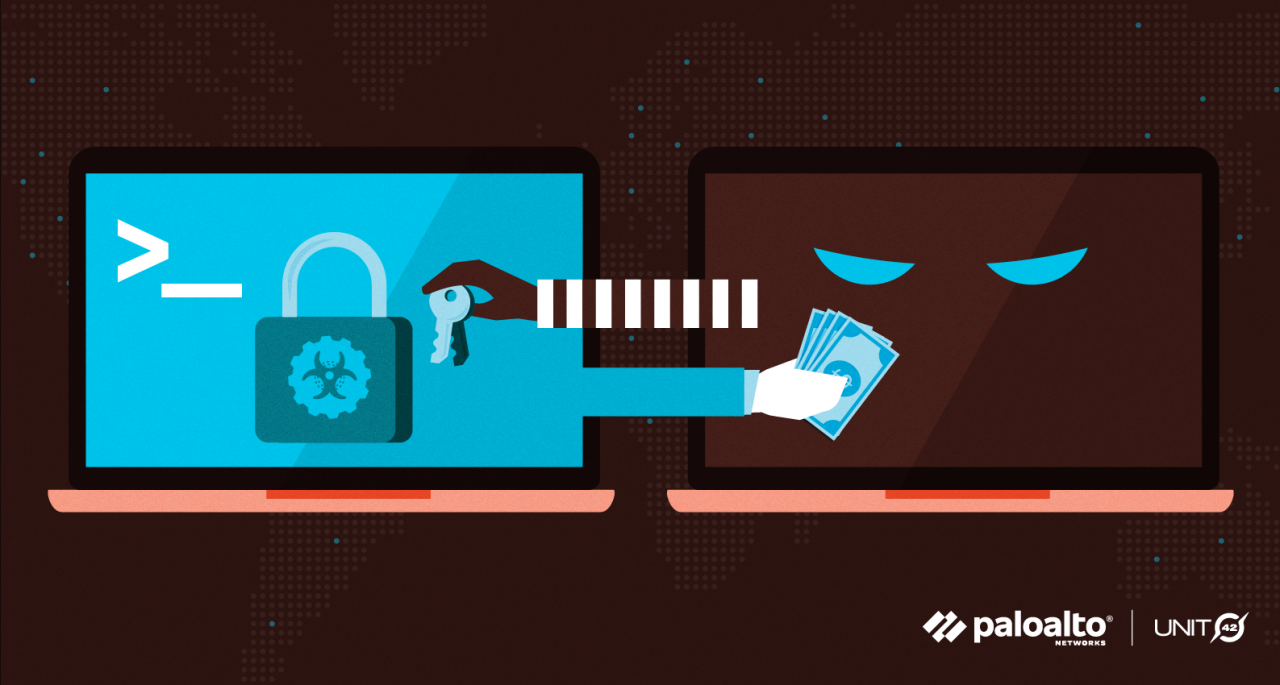
Clop Ransomware Targets Maritime Firm Swire Pacific Offshore
Clop ransomware targets maritime firm Swire Pacific Offshore – a chilling headline that underscores the growing threat of cyberattacks against even the most robust industries. This incident isn’t just about stolen data; it’s a stark reminder of the vulnerabilities inherent in global supply chains and the potentially devastating consequences for businesses operating in the maritime sector. We’ll dive into the specifics of this attack, exploring the methods used, the impact on Swire Pacific Offshore, and what it means for the future of cybersecurity in shipping.
The attack on Swire Pacific Offshore highlights the sophisticated tactics employed by ransomware groups like Clop. Their methods extend beyond simple encryption; they often steal data first, using it as leverage for a larger ransom. This raises concerns about the potential for long-term damage, beyond the immediate operational disruptions. Understanding the vulnerabilities exploited and the ripple effects across the maritime industry is crucial to building more resilient defenses.
The Clop Ransomware Attack on Swire Pacific Offshore
The maritime industry, a critical component of global trade, is increasingly becoming a target for cybercriminals. Swire Pacific Offshore, a significant player in this sector, recently fell victim to a Clop ransomware attack, highlighting the vulnerability of even large, established companies to sophisticated cyber threats. This incident underscores the need for robust cybersecurity measures within the maritime industry and beyond.The attack leveraged a vulnerability in MOVEit Transfer, a popular managed file transfer (MFT) solution used by many organizations.
Clop, known for its proficiency in exploiting zero-day vulnerabilities and its aggressive data exfiltration tactics, likely gained initial access through this compromised software. Once inside Swire Pacific Offshore’s network, the group likely used lateral movement techniques to access sensitive data, including potentially financial records, operational plans, and customer information. The exfiltration of this data was likely achieved through established command-and-control servers, using encrypted channels to avoid detection.
The exact methods employed remain undisclosed by Swire Pacific Offshore and Clop.
Impact of the Attack on Swire Pacific Offshore’s Operations
The Clop ransomware attack had a potentially significant impact on Swire Pacific Offshore’s operations. Disruptions to services are likely, considering the nature of the attack and the reliance on digital systems within the maritime industry. Operational delays, including scheduling conflicts and potential contract breaches, could result in substantial financial losses. Furthermore, the theft of sensitive data poses a risk of reputational damage, legal repercussions, and potential financial penalties associated with data breaches and regulatory non-compliance.
The full extent of the financial losses is yet to be publicly disclosed.
Ransom Demands by the Clop Ransomware Group
While the specific ransom demands made by Clop against Swire Pacific Offshore remain unconfirmed, based on previous Clop operations, it is likely that the group demanded a significant sum of cryptocurrency in exchange for a decryption key and a promise to delete the stolen data. Clop’s modus operandi often involves double extortion, where the threat of publicly releasing stolen data is used to pressure victims into paying the ransom, even if decryption is not a primary concern.
This tactic maximizes their potential gains and creates further pressure on the victim.
Timeline of the Swire Pacific Offshore Ransomware Attack
A precise timeline of events surrounding the Swire Pacific Offshore attack is not publicly available. However, based on typical ransomware attack lifecycles and public disclosures, a likely sequence of events might include:* Initial Compromise: The attack likely began with the exploitation of the MOVEit Transfer vulnerability, granting Clop initial access to Swire Pacific Offshore’s network. This phase might have gone unnoticed for some time.
Data Exfiltration
Once inside the network, Clop likely spent time identifying valuable data and exfiltrating it to their servers. This phase could have lasted for days or weeks.
Ransomware Deployment
After data exfiltration, Clop likely deployed their ransomware, encrypting critical files and systems, rendering them unusable.
Ransom Demand
Following encryption, Clop likely issued their ransom demand, threatening to release the stolen data if it wasn’t met.
Public Disclosure
The attack was eventually publicly disclosed, likely after Swire Pacific Offshore had assessed the situation and decided on its response strategy. The exact timing of this disclosure remains unclear.
Swire Pacific Offshore’s Cybersecurity Posture
The Clop ransomware attack on Swire Pacific Offshore highlighted the critical need for robust cybersecurity measures within the maritime industry. While Swire Pacific Offshore, like many companies, doesn’t publicly detail the specifics of its cybersecurity infrastructure and practices, analyzing available information and industry best practices reveals potential vulnerabilities and areas for improvement. Understanding their likely posture before the attack allows for a more informed discussion about necessary enhancements.Swire Pacific Offshore’s publicly available information regarding cybersecurity is limited.
Their website primarily focuses on their operations and services, with minimal detail on their security protocols. This lack of transparency is common among many companies, but it makes assessing their pre-attack posture challenging. We can, however, infer potential vulnerabilities based on the nature of their business and typical cybersecurity challenges faced by maritime firms.
Potential System Vulnerabilities Exploited by Attackers
The maritime industry relies heavily on interconnected systems, from operational technology (OT) controlling vessels to IT systems managing business operations and communications. Given Clop’s known tactics of exploiting vulnerabilities in older or less-patched software, it’s plausible that the attackers found weaknesses in either their OT or IT infrastructure. Outdated software, insufficient network segmentation, and a lack of multi-factor authentication are common vulnerabilities that could have been exploited.
Furthermore, the use of unpatched or unsupported software, particularly in older systems, presents a significant risk. A lack of robust endpoint detection and response (EDR) solutions might have allowed the ransomware to spread undetected within the network. Finally, phishing attacks remain a significant threat; a successful phishing campaign could provide initial access to the network.
Importance of Robust Cybersecurity Measures in the Maritime Industry
The maritime industry faces unique cybersecurity challenges. The interconnected nature of vessels and shore-based operations creates a large attack surface. Data breaches can lead to significant financial losses, operational disruptions, and reputational damage. Moreover, compromising operational systems could have catastrophic consequences, potentially leading to accidents or environmental damage. Protecting sensitive data, such as crew details, cargo manifests, and financial information, is paramount.
Maintaining operational resilience is equally crucial, ensuring continuous operation even in the face of a cyberattack. The industry needs to prioritize robust cybersecurity practices to mitigate these risks.
Recommendations for Improving Cybersecurity Defenses
To improve their cybersecurity defenses, Swire Pacific Offshore should adopt a multi-layered approach. This includes implementing robust network segmentation to isolate critical systems, regularly patching and updating all software, deploying strong multi-factor authentication across all systems, and investing in advanced threat detection and response capabilities, including EDR and Security Information and Event Management (SIEM) systems. Regular security audits and penetration testing are essential to identify vulnerabilities proactively.
The recent Clop ransomware attack on Swire Pacific Offshore highlights the vulnerability of even large maritime firms to cyber threats. Protecting sensitive data requires a robust security strategy, and that’s where understanding solutions like bitglass and the rise of cloud security posture management becomes crucial. Implementing strong cloud security practices is paramount in preventing future incidents like the Swire Pacific Offshore breach.
Furthermore, employee cybersecurity awareness training is crucial to prevent phishing and other social engineering attacks. Finally, a comprehensive incident response plan should be in place to minimize the impact of future attacks. A robust cybersecurity strategy needs to address both IT and OT security, acknowledging the unique challenges of the maritime environment. Adopting industry best practices and complying with relevant regulations will significantly improve their overall security posture.
The Clop Ransomware Group’s Tactics and Techniques

Clop is a prolific ransomware group known for its sophisticated techniques and high-profile targets. Their operations demonstrate a clear understanding of network infrastructure and a willingness to adapt their methods to exploit vulnerabilities. Understanding their TTPs is crucial for mitigating the risk of future attacks.Clop’s attacks typically involve a multi-stage process, beginning with initial access and culminating in data encryption and extortion.
They leverage various techniques, often exploiting zero-day vulnerabilities or known software flaws to gain a foothold in victim networks. Post-compromise, they move laterally, gathering sensitive data before deploying the ransomware payload. Their operations often involve the theft of sensitive data, used as leverage to increase the pressure on victims to pay the ransom.
Initial Access Vectors
Clop’s initial access methods are diverse and often highly targeted. They have been known to utilize compromised credentials, exploit vulnerabilities in commonly used software (like VPNs or outdated enterprise applications), and employ phishing campaigns designed to trick employees into revealing login details or downloading malicious attachments. In some cases, they may even leverage access gained through other threat actors.
The group’s adaptability and focus on reconnaissance make it challenging to predict their exact approach.
Data Exfiltration and Ransomware Deployment
Once inside a network, Clop meticulously maps the system, identifying valuable data and critical servers. They prioritize exfiltrating data before encrypting it, maximizing their leverage for extortion. The data exfiltration process is often carefully planned to avoid detection, using techniques like data compression and encryption to minimize the size and visibility of the stolen data. Only after the data is secured do they deploy the ransomware payload, encrypting sensitive files and rendering them inaccessible.
Comparison with Other Clop Attacks
While the specifics of the Swire Pacific Offshore attack remain largely undisclosed, we can compare it to other known Clop attacks. The group’s consistent focus on data exfiltration prior to encryption is a common thread. Like other targets, Swire Pacific Offshore likely experienced significant disruption to operations due to the encryption of critical systems. The similarities in their approach underscore the group’s established methodology and their effectiveness in achieving their objectives.
However, variations may exist depending on the specific vulnerabilities exploited and the target’s network architecture.
Motivations and Financial Incentives
Clop’s primary motivation is financial gain. Maritime companies, like Swire Pacific Offshore, are attractive targets due to the sensitive nature of their data and the potential for significant disruption to their operations. Data related to shipping schedules, cargo manifests, financial records, and client information are all highly valuable, and their compromise can lead to substantial financial losses and reputational damage.
The group likely assesses the potential payout based on the victim’s size and the perceived value of their data.
Hypothetical Scenario: Gaining Initial Access to Swire Pacific Offshore
A hypothetical scenario could involve a phishing email targeting an employee in Swire Pacific Offshore’s IT department. The email might appear to be from a legitimate shipping partner, containing a malicious attachment disguised as a shipping document. Upon opening the attachment, malware would be installed, granting Clop initial access to the network. From there, they could leverage this access to move laterally, identify valuable data, exfiltrate it, and deploy their ransomware payload.
This scenario highlights the importance of robust security awareness training and the use of multi-factor authentication to mitigate the risk of phishing attacks.
Impact on the Maritime Industry

The Clop ransomware attack on Swire Pacific Offshore serves as a stark reminder of the growing cybersecurity threats facing the maritime industry. This sector, traditionally reliant on established operational processes and less focused on advanced digital security measures, is increasingly vulnerable to sophisticated cyberattacks that can disrupt operations, damage reputation, and lead to significant financial losses. The attack highlights the urgent need for a comprehensive reassessment of cybersecurity practices across the board.The incident underscores the interconnectedness of modern shipping and the potential for widespread disruption.
A successful ransomware attack on a major player like Swire Pacific Offshore can ripple through the supply chain, affecting cargo delivery schedules, impacting global trade, and potentially endangering lives at sea if critical systems are compromised. The vulnerability of operational technology (OT) systems used in vessel control and management is a particular concern, as these systems are often less protected than IT systems and may lack robust security protocols.
Potential Preventative Measures for Maritime Companies
The following table Artikels potential preventative measures maritime companies can implement to mitigate the risk of ransomware attacks. These strategies range from straightforward best practices to more complex, potentially costly solutions. The cost estimates are approximate and can vary depending on the size and complexity of the organization.
| Mitigation Strategy | Implementation Details | Cost Estimate | Effectiveness |
|---|---|---|---|
| Regular Security Audits and Penetration Testing | Employing external cybersecurity experts to identify vulnerabilities and weaknesses in IT and OT systems. | $10,000 – $50,000+ per audit | High – Proactively identifies and addresses weaknesses before exploitation. |
| Employee Cybersecurity Training | Regular training programs to educate employees on phishing scams, malware, and safe internet practices. | $500 – $2,000 per employee per year | High – Reduces human error, a primary attack vector. |
| Multi-Factor Authentication (MFA) | Implementing MFA for all network access points to enhance account security. | $1,000 – $5,000 for implementation and ongoing management | High – Significantly reduces unauthorized access. |
| Robust Backup and Recovery Systems | Regularly backing up critical data to offline, secure locations and implementing a tested recovery plan. | $5,000 – $20,000+ depending on storage and infrastructure needs. | High – Minimizes downtime and data loss in the event of an attack. |
Examples of Significant Cyberattacks Targeting the Maritime Industry
The maritime industry has experienced several high-profile cyberattacks in recent years. These incidents, though varying in scale and impact, all highlight the vulnerability of the sector. For example, the NotPetya ransomware attack in 2017 significantly impacted Maersk, causing widespread operational disruptions and substantial financial losses. Other attacks have targeted port operations, disrupting logistics and supply chains. These events demonstrate the need for proactive and robust cybersecurity measures.
The Clop ransomware attack on Swire Pacific Offshore highlights the vulnerability of even large maritime firms to cyber threats. Building robust, secure systems is crucial, and that’s where understanding the future of application development comes in. Check out this article on domino app dev the low code and pro code future to see how innovative approaches can help improve security and resilience against attacks like the one targeting Swire Pacific Offshore.
Ultimately, proactive measures are key to mitigating future ransomware risks.
The Need for Increased Cybersecurity Collaboration, Clop ransomware targets maritime firm swire pacific offshore
The Swire Pacific Offshore attack underscores the crucial need for increased collaboration and information sharing within the maritime community. A coordinated approach, involving industry stakeholders, governments, and cybersecurity experts, is essential to develop and implement effective cybersecurity strategies. Sharing threat intelligence, best practices, and incident response plans can significantly improve the sector’s overall resilience to cyberattacks. This collaborative effort can help identify emerging threats, develop shared defense mechanisms, and facilitate faster response times to incidents.
Legal and Regulatory Implications
The Clop ransomware attack on Swire Pacific Offshore raises significant legal and regulatory concerns, impacting both the victim company and the perpetrators. Understanding the applicable legal frameworks and potential consequences is crucial for mitigating future risks and ensuring accountability. This section will explore the relevant laws, potential legal actions, and the role of law enforcement.
Applicable Legal and Regulatory Frameworks
Several international and national legal frameworks apply to this type of cyberattack. Internationally, conventions such as the Budapest Convention on Cybercrime provide a framework for international cooperation in investigating and prosecuting cybercrimes. Nationally, laws vary depending on the location of the victim (Swire Pacific Offshore), the perpetrators (Clop ransomware group), and the servers used in the attack. For example, in the United States, laws like the Computer Fraud and Abuse Act (CFAA) and various state laws could be relevant.
In the UK, the Computer Misuse Act 1990 would be applicable. The specific laws that apply depend heavily on the jurisdictional aspects of the attack, including where the data was stored, accessed, and compromised. Data protection laws, such as the GDPR in Europe and CCPA in California, also come into play, particularly concerning the handling and potential breach of personal data.
Potential Legal Consequences for Swire Pacific Offshore and Clop
Swire Pacific Offshore faces potential legal consequences relating to data breaches and failure to meet data protection obligations. Depending on the affected jurisdictions and the nature of the compromised data, this could lead to fines, lawsuits from affected individuals or clients, and reputational damage. The company may also face scrutiny from regulatory bodies regarding their cybersecurity practices and compliance with relevant standards.
The Clop ransomware group, on the other hand, faces potential prosecution under various national laws for crimes such as computer hacking, extortion, and data theft. International cooperation is often required to track down and prosecute these groups, given their often transnational nature. The penalties for such crimes can include significant prison sentences and financial penalties.
Role of Law Enforcement Agencies
Law enforcement agencies play a vital role in investigating and responding to ransomware attacks. This includes identifying the perpetrators, tracing the flow of funds, and gathering evidence for potential prosecution. International collaboration is frequently necessary, as ransomware groups often operate across borders. Agencies may also work with cybersecurity firms to analyze the attack, identify vulnerabilities, and assist victims in recovering their data.
The success of law enforcement actions depends on effective international cooperation, robust investigative techniques, and sufficient resources.
Potential Legal Actions for Swire Pacific Offshore
Swire Pacific Offshore has several legal avenues to pursue to recover from the attack and address damages. These could include:
- Filing civil lawsuits against Clop for damages resulting from the ransomware attack, including costs of recovery, lost revenue, and reputational harm.
- Pursuing legal action against any third-party vendors or contractors whose negligence contributed to the breach.
- Working with law enforcement to assist in the investigation and prosecution of the perpetrators.
- Implementing enhanced cybersecurity measures to prevent future attacks and demonstrate compliance with relevant regulations.
- Seeking insurance coverage for losses incurred as a result of the ransomware attack.
Conclusive Thoughts: Clop Ransomware Targets Maritime Firm Swire Pacific Offshore
The Clop ransomware attack on Swire Pacific Offshore serves as a wake-up call for the entire maritime industry. The incident underscores the need for proactive cybersecurity measures, robust data protection strategies, and increased collaboration to share threat intelligence and best practices. While the immediate impact on Swire Pacific Offshore is significant, the broader implications for the industry are far-reaching.
The future of maritime security hinges on a collective commitment to strengthening defenses and mitigating the risks posed by sophisticated cybercriminals like the Clop group.
Frequently Asked Questions
What type of data did Clop likely steal from Swire Pacific Offshore?
Likely targets include sensitive operational data, customer information, financial records, and intellectual property related to shipping routes, vessel details, and contracts.
Did Swire Pacific Offshore pay the ransom?
This information is typically not publicly disclosed by victims due to security and legal reasons. Paying a ransom doesn’t guarantee data recovery and often emboldens attackers.
What are the long-term consequences for Swire Pacific Offshore beyond immediate operational disruptions?
Long-term consequences could include reputational damage, loss of client trust, legal repercussions, and increased insurance premiums.
What legal actions might Swire Pacific Offshore take against Clop?
Potential legal actions include civil lawsuits for damages, working with law enforcement to pursue criminal charges against the attackers, and seeking legal recourse to recover stolen data.





